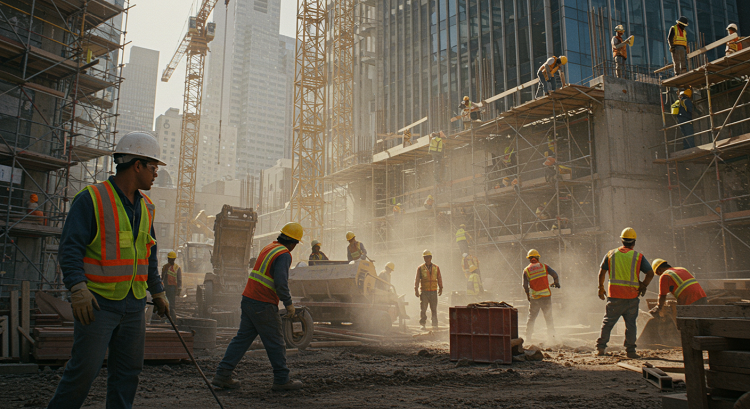Final inspections mark a pivotal point in any construction project. They signal that the finish line is in sight, but no project reaches true completion without a thorough and detailed punch list. For construction firms aiming to protect their reputation and reduce costly callbacks, this document serves as a last opportunity to catch and correct issues before handing over the keys. Construction Punch Lists, when developed with precision and executed thoroughly, help prevent disputes, delays, and dissatisfied clients.
Below is a breakdown of what a complete punch list should include to achieve a flawless final sign-off.
Table of Contents
Clearly Identified Outstanding Work
Every punch list must start by identifying what remains incomplete. These items may include minor tasks that crews postponed or overlooked during earlier stages. Whether it’s a baseboard missing in one room or a section of drywall that needs another coat of paint, unfinished work stands out to owners and inspectors.
Keep in mind that unchecked items—no matter how small—create the perception of neglect. Assign responsibility to specific subcontractors or teams for each item, and track their progress daily until resolution.
Quality Control Issues
A structure might be physically complete, but that doesn’t guarantee it meets the expected quality standards. Workmanship-related concerns can range from uneven tile installation to misaligned cabinetry. These aren’t necessarily structural defects, but they can seriously affect client satisfaction.
Set measurable benchmarks for quality at the start of the project and revisit them at the end. Quality concerns on punch lists often arise because of inconsistencies between design intent and execution. Reviewing installations against shop drawings, manufacturer guidelines, and project specs ensures the work matches what was promised.
Safety Hazards and Code Violations
No punch list is complete without confirming compliance with safety regulations and building codes. Even a seemingly finished space may contain overlooked risks. Loose stair railings, ungrounded outlets, or insufficient fire-stopping materials are serious issues that can halt final approval.
It’s critical to inspect every part of the structure with an eye toward code. Always bring in a qualified inspector or construction manager familiar with local laws to catch potential violations before an official walks the site.
Final Touches That Influence Client Impressions
Visual appeal holds as much weight as functionality during final inspections. Scuffed walls, dirty windows, or debris left in corners may suggest a rushed or careless job. While these aren’t major construction flaws, they can tarnish a client’s first impression.
Schedule a walk-through specifically to address aesthetics. Assign a cleaning crew, confirm all paint touch-ups are complete, and make sure all fixtures shine. Clients notice the polish—or the lack of it.
What to Include in a Comprehensive Construction Punch List
For a punch list to be effective, it must include more than vague descriptions. A clear structure ensures every item is addressed properly and in order. Construction firms should structure their punch lists to contain the following:
- Item number: Helps reference specific tasks quickly during reviews.
- Location: Clearly specify where the item exists on-site.
- Issue description: Use simple but detailed language to describe the problem.
- Responsible party: Assign a subcontractor or crew to handle the fix.
- Deadline for completion: Set a firm date to avoid delays.
- Status tracking: Use checkboxes or digital systems to monitor resolution.
- Photo evidence: Include images before and after to document fixes.
- Verification signature: Designate a manager to confirm each item’s completion.
A structured approach prevents confusion and promotes accountability across the job site.
Coordination Between Teams is Critical
A punch list only succeeds when all teams communicate efficiently. That means project managers, subcontractors, quality inspectors, and owners must align on expectations and responsibilities. Without clear communication, punch list items fall through the cracks or get duplicated, which wastes time.
Set regular meetings during the punch list phase to review updates, discuss hold-ups, and confirm progress. Consider using punch list management software to keep everyone on the same page. Digital tools allow teams to upload photos, assign tasks instantly, and close out items with real-time updates.
Conduct a Final Walk-Through With All Stakeholders
Once every punch list item has been addressed, a final walk-through with all key players ensures transparency. Bring the project owner, general contractor, and lead subcontractors together on-site. Each party should review the site independently and then as a group.
This collaborative inspection confirms that no one has missed anything and that all repairs meet expectations. Final walk-throughs also offer an opportunity for owners to ask questions before the official handover, reducing surprises later.
Take Your Closeouts Seriously
A strong closeout process starts with a detailed and effective punch list. It protects your company’s reputation, keeps clients happy, and reduces legal risks. Construction firms that treat punch lists as an essential project phase—not an afterthought—will consistently deliver better results.
Ready to strengthen your closeout process? Start by creating bulletproof Construction Punch Lists that leave nothing to chance.

